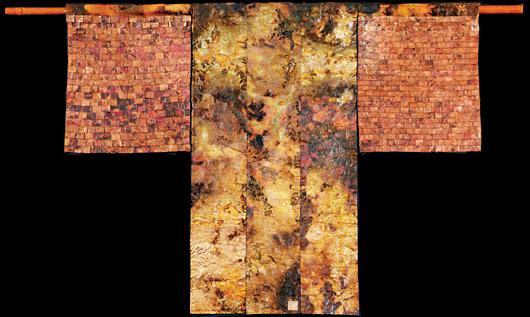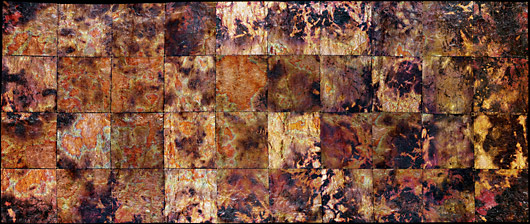These copper pieces arise from textile tradition and are often assembled using sewing and other needlework techniques. Where sheet metal is used, the thin gauge makes it possible to sew either by pre-drilling holes in the metal or when thin enough, by piercing with a needle. Consequently, the work weighs no more and often less than a painting of the same size. The color of the copper is obtained by heating with a torch or in an ordinary brush fire and then quenching in cold water. This random patination is permanent. The thinnest copper is also crumpled then flattened and sealed with amber shellac.

(45” by 60”) • $3,000
copper on linen burlap

(14′ by 5′) • On permanent loan
copper on Tyvek and felt
